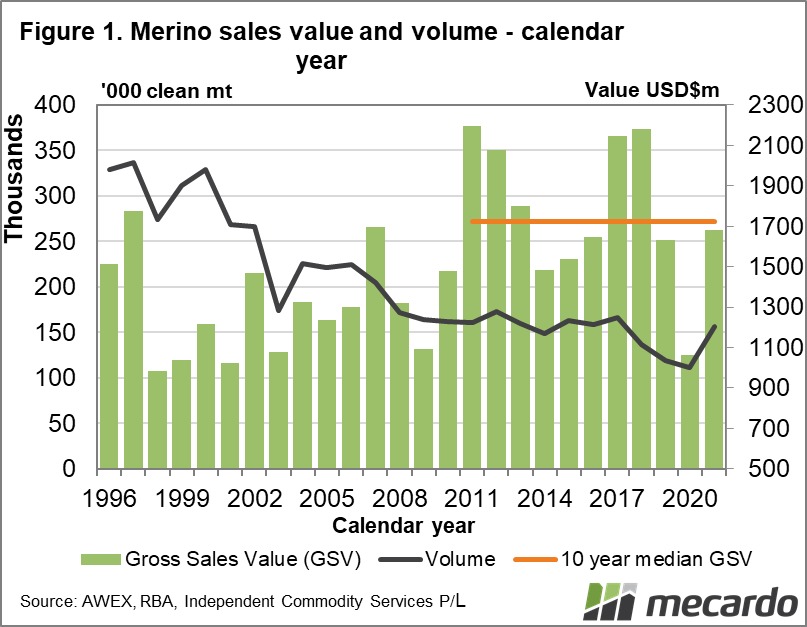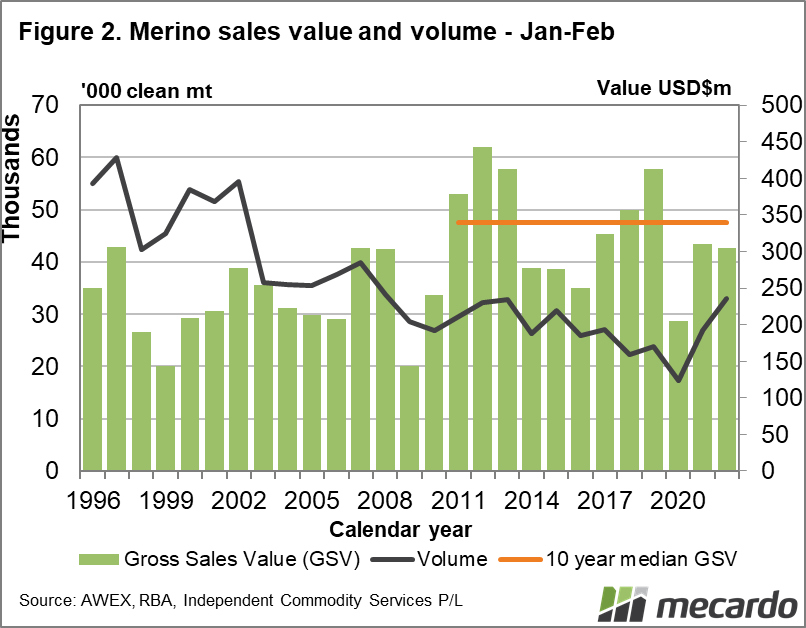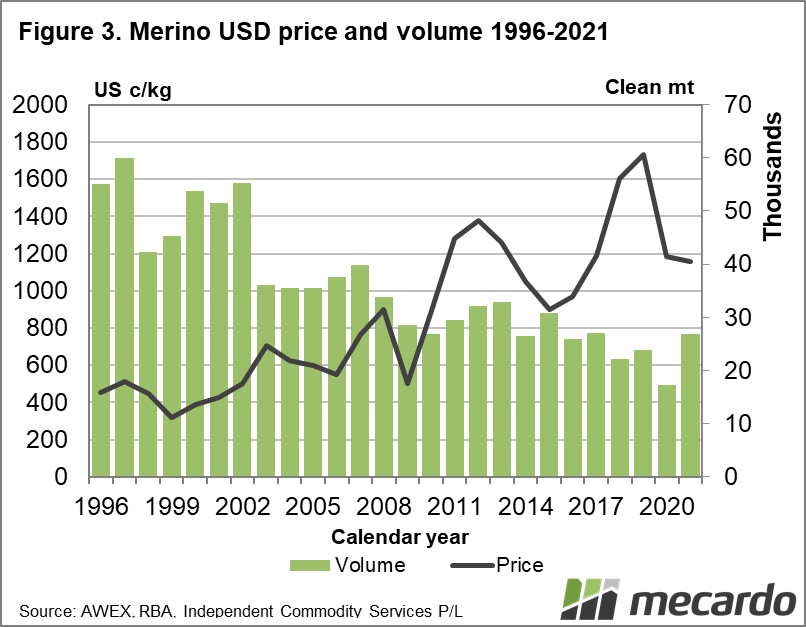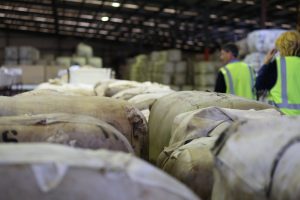Thinking the greasy wool market is traversing a stormy time seems an apt description of the mix of geopolitical risk, logistics issues and the normal economic uncertainty that goes with a long and complicated supply chain. In this article, we look at how the Merino market has fared in 2022 so far compared to past years.
In May of 2021, Mecardo looked at the variation in the gross sales value (volume by price) for fine and broad Merino wool, with particular attention to the interruption caused by the pandemic. Gross sales value looks at the cash outlaid by the supply chain and in doing so incorporates changes in volume.
Figure 1 shows the annual (calendar year) gross sales value (auction) for Merino wool sold in Australia (incorporating superfine wool) from the mid-1990s through to 2021. The annual volume of Merino wool is overlaid, along with the median gross sale value for the past decade. The gross sale value for 2020 was the lowest since 2001. In 2021 the sale value recovered to be within 3% of the past decade median, a solid result. The years 2011, 2012, 2017 and 2018 stand out as years of very high gross sales value which are associated with strong cyclical upturns in the Merino price. The volume sold in 2021 increased from the low levels of 2020, to be on par with the level seen from 2009 to 2018.
So, how is the market faring in 2022 so far? Figure 2 repeats the analysis shown in Figure 1 but only for January and February, with 2022 added. The gross sales value for 2022 to date is on par with the same period in 2021, some 9% below the median level for the past decade. Dollar-wise Merino sales for January and February 2022 have only been exceeded substantially in five previous seasons, which is a good result given the issues abound in the world. 2022 is off to a solid start, although the increase in volume sold is masking this strength in terms of average price received.
Figure 3 simply compares annual (calendar year) Merino volumes sold and the average (US dollar) price from the mid-1990s to 2021. The two series have a negative correlation, with the fall in volume accounting for around 60% of the rise in price.
What does it mean?
Despite the logistical issues, which are plaguing many commodities and limiting price and demand in the greasy wool market, supply chain expenditure on Merino wool at Australian auction in 2022 so far has been exceeded substantially by the strong markets of 2011-13 and 2017-18. Increased Merino sale volumes in 2022 have put some downward pressure on price, so this solid performance is not immediately obvious.
Have any questions or comments?
Key Points
- The Merino market has got off to a solid start, despite plenty of issues in the world, for 2022 in terms of gross sales value and volume sold.
- In 2021 the Australian Merino market recovered from the lows of 2020, to be close to the decade average for gross sales value.
Click on figure to expand
Click on figure to expand
Click on figure to expand
Data sources: AWEX, RBA, ICS, Mecardo















